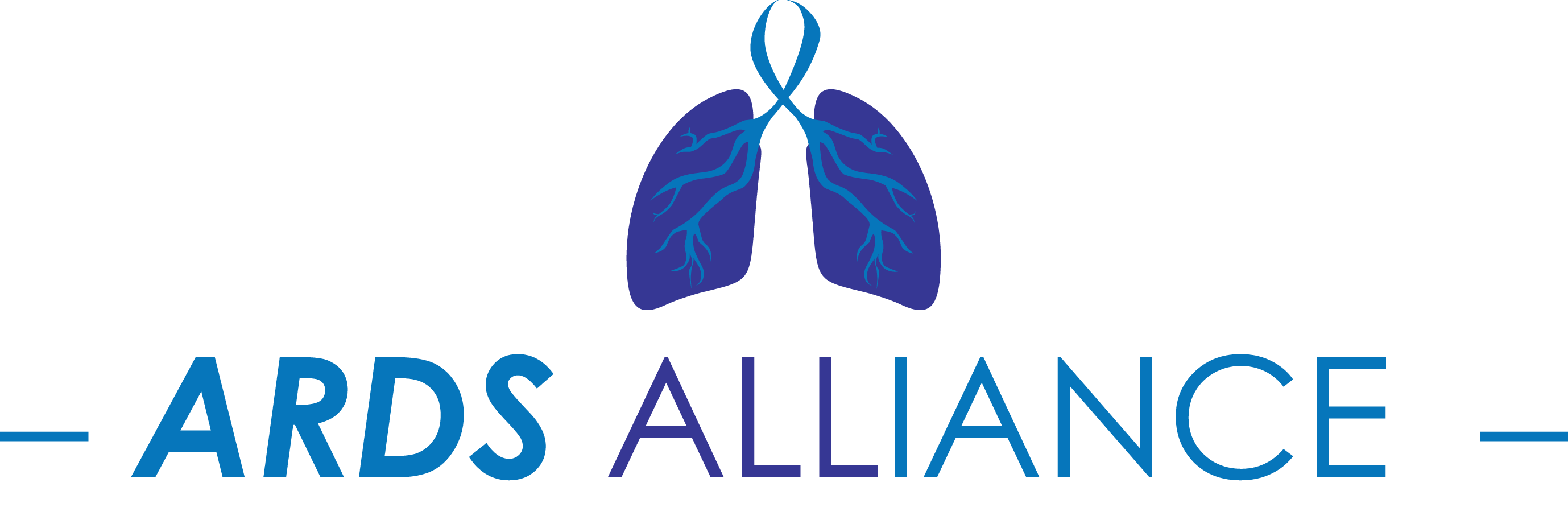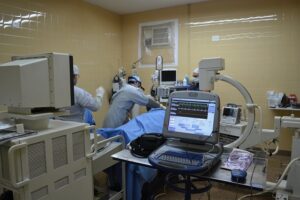Managing ARDS in Children with Underlying Health Conditions
Managing ARDS in Children with Underlying Health Conditions
Acute Respiratory Distress Syndrome (ARDS) is a life-threatening condition often shrouded in uncertainty and fear for both parents and healthcare providers, particularly when it affects children with underlying health conditions. ARDS is characterized by rapid onset of widespread inflammation in the lungs, leading to severe respiratory failure. Although primarily known to impact adults, ARDS can also manifest in pediatric populations, particularly in children with pre-existing health issues such as asthma, congenital heart defects, or neurodevelopmental disorders. This article aims to provide comprehensive insights into managing ARDS in such vulnerable populations, addressing essential aspects surrounding the condition, treatment options, and supportive care strategies.
Understanding ARDS in the Pediatric Population
ARDS is a serious condition that occurs when the lungs become inflamed and filled with fluid. This typically leads to insufficient oxygen reaching the bloodstream, resulting in severe respiratory distress. For children with underlying health conditions, the risk factors can amplify the severity and complications associated with ARDS. A variety of factors can contribute to the development of ARDS, including infections (like pneumonia or COVID-19), trauma, or aspiration of vomit or foreign bodies.
In pediatric patients, ARDS may present differently than in adults, often making diagnosis more challenging. Symptoms may include:
- Rapid, shallow breathing
- Increased heart rate
- Low oxygen levels (hypoxemia)
- Severe chest pain
- Cyanosis (bluish color in lips or extremities)
Understanding the underlying health conditions that children may have is crucial in the management and treatment of ARDS. These can range from chronic respiratory conditions, such as cystic fibrosis, to neuromuscular disorders that affect respiratory function, like muscular dystrophy. Such conditions can compromise lung function even before ARDS develops, leading to a more complicated clinical picture.
Initial Assessment and Diagnosis
The initial assessment of a child suspected of having ARDS begins with a thorough medical history and physical examination. Healthcare providers should consider the child’s prior health status, any underlying conditions, and recent infections or exposures that may have contributed to the respiratory distress. Diagnostic tests typically involve:
- Chest X-ray or CT scan to visualize lung structure
- Blood gas analysis to determine carbon dioxide and oxygen levels
- Complete blood count (CBC) to assess for infection or inflammation
- Sputum culture to identify causative pathogens, if applicable
Early and accurate diagnosis is paramount as it sets the stage for timely intervention. Misdiagnosis or delayed treatment may worsen the disease progression, adversely affecting pediatric patients who may already be vulnerable due to their pre-existing health conditions.
Management Strategies
Managing ARDS in children with underlying health conditions requires a multi-faceted approach tailored to the individual child’s needs. Treatment typically focuses on correcting hypoxia, managing ventilation, and treating the underlying cause of ARDS. Key management strategies include:
1. Oxygen Therapy
Oxygen therapy is often the first line of treatment to address hypoxemia. Methods include:
- Nasal cannula or face mask for mild hypoxia
- High-flow nasal cannula (HFNC) or non-invasive positive pressure ventilation (NIPPV) for moderate cases
- Endotracheal intubation and mechanical ventilation for severe cases
Children with existing respiratory issues may require careful monitoring and management of their oxygen saturation, adjusting therapy as needed to maintain adequate levels.
2. Mechanical Ventilation
If a child is unable to maintain adequate oxygen levels through non-invasive means, mechanical ventilation may be necessary. Key considerations include:
- Use of low tidal volume strategies to minimize ventilator-induced lung injuries
- Cautious management of positive end-expiratory pressure (PEEP) settings to enhance oxygenation without compromising hemodynamics
- Adjusting ventilatory parameters based on individual respiratory mechanics and underlying conditions
Mechanical ventilation requires close collaboration among intensivists and pediatric pulmonologists to optimize parameters, facilitate lung recovery, and minimize complications.
3. Treating the Underlying Cause
Identifying and treating the underlying cause of ARDS is essential, as it can significantly impact outcomes. This may involve:
- Antibiotics or antivirals for infectious etiologies
- Supportive care for non-infectious causes, such as fluid management for head trauma or sepsis
- Addressing comorbid conditions through medication adjustments or specialized care
Each child’s treatment plan should be comprehensive, considering existing conditions that may impact treatment efficacy and safety.
Supportive Care
Supportive care plays a crucial role in the management of ARDS, particularly for children with complex medical needs. Strategies include:
1. Nutritional Support
Children with ARDS often experience increased metabolic demands. Therefore, addressing nutritional needs is paramount. Considerations include:
- Engaging a pediatric dietitian to create individualized nutrition plans
- Using enteral feeding if the child is unable to eat
- Monitoring growth parameters to assess nutritional adequacy
2. Family and Psychological Support
Being diagnosed with ARDS can be overwhelming for families. Providing emotional support is an important part of care. Strategies may involve:
- Offering counseling services to address anxiety and coping strategies
- Facilitating family involvement in care whenever possible
- Providing access to peer support groups for families of children with complex conditions
Emphasizing the importance of family-centered care ensures that the child’s psychological and emotional needs are met alongside their medical needs.
Potential Complications and Long-Term Effects
Though advancements in medical treatment have improved outcomes for children with ARDS, complications can arise, particularly in those with pre-existing conditions. Potential complications include:
- Pneumothorax from mechanical ventilation
- Ventilator-associated pneumonia
- Increased risk of pulmonary fibrosis or other chronic respiratory conditions
Long-term effects may necessitate ongoing pulmonary rehabilitation, systematic follow-up with specialists, and attention to developmental concerns resulting from prolonged illness or hospital stays.
FAQs about ARDS in Children
1. Can ARDS be prevented in children with underlying health conditions?
While not all cases of ARDS can be prevented, strategies to minimize respiratory infections and manage underlying conditions can help reduce risk.
2. What are the long-term outlooks for children who survive ARDS?
Long-term outcomes can vary widely based on the severity of ARDS and existing health conditions. Regular follow-up with healthcare providers is essential to monitor lung function and other potential complications.
3. How can families best support a child recovering from ARDS?
Providing emotional support, facilitating communication with healthcare providers, and ensuring adherence to any prescribed rehabilitation or follow-up care plans are crucial ways families can help.
Conclusion
Managing ARDS in children with underlying health conditions is a complex yet critical endeavor that requires a thoughtful, multidisciplinary approach. As ARDS can have significant implications on both physical and emotional health, understanding the condition’s nuances and complexities is vital. Prompt recognition, comprehensive management strategies, supportive care, and ongoing family involvement can provide the best possible outcome for these vulnerable assets. Awareness and education can help demystify ARDS, empowering families and reducing anxiety related to this serious medical condition. If you suspect your child is experiencing symptoms of ARDS, seeking immediate medical attention is crucial. Education, connection, and ongoing support pave the way for brighter futures for affected children and their families.
References
For further reading and more in-depth knowledge about ARDS, consider these resources:
About ARDS and Post-ARDS
ARDS (Acute Respiratory Distress Syndrome) is a life-threatening condition typically treated in an Intensive Care Unit (ICU). While ARDS itself is addressed during the ICU stay, recovery doesn’t end with discharge; patients then embark on a journey of healing from the effects of having had ARDS.
Disclaimer
The information provided in ARDS Alliance articles is for general informational and educational purposes only and is not a substitute for professional medical advice, diagnosis, or treatment. While we strive to present accurate, current information, the field of Acute Respiratory Distress Syndrome (ARDS) and related healthcare practices evolve rapidly, and ARDS Alliance makes no guarantee regarding the completeness, reliability, or suitability of the content.
Always seek the advice of qualified healthcare professionals with any questions you may have regarding a medical condition. Never disregard professional medical advice or delay seeking it because of information you read in ARDS Alliance articles. ARDS Alliance, its authors, contributors, and partners are not liable for any decision made or action taken based on the information provided in these articles.
About ARDS Alliance
Our mission is to improve the quality of life for ALL those affected by ARDS.
The ARDS Alliance is a non-profit committed to raising awareness and enhancing the understanding of Acute Respiratory Distress Syndrome (ARDS), a severe lung condition often occurring in critically ill patients. Through developing alliances, it unites various organizations and experts striving to improve care and support research aimed at finding more effective treatments. Their efforts include educating the public and healthcare providers about ARDS symptoms, risk factors, and advancements in treatment, ensuring better patient outcomes and resource availability.

“As the President of ARDS Alliance, I am dedicated to improving awareness and support for patients suffering from acute respiratory distress syndrome. Our organization works tirelessly to provide resources and education to both patients and healthcare professionals. By fostering a community of understanding and advocacy, we strive to make a positive impact on those affected by this devastating condition.”
~ Paula Blonski
President, ARDS Alliance





